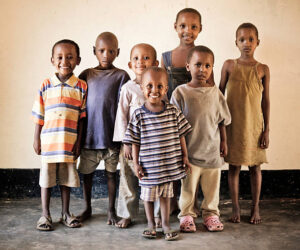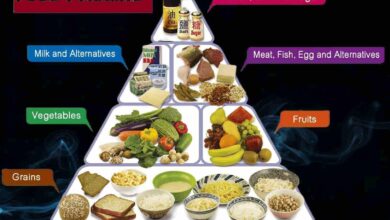STUNTING AND WASTING: UNDERSTANDING THE TWIN CHALLENGES OF MALNUTRITION

Stunting and
wasting are two types of malnutrition that influence children under than 5 years of age. Stunting is the point
at which a child height is essentially sub optimal for their age, and wasting
is the point at which a kid’s weight is fundamentally less than ideal for their
height. The two circumstances can have serious ramifications for a children
health and improvement.
 |
| Stunting and Wasting |
WHAT IS STUNTING?
Stunting is
characterized as low height for-age. It is the aftereffect of persistent or
repetitive under nutrition, as a rule related with poverty, poor maternal
wellbeing and nutrition, successive sickness or inadequate feeding and care in
early life.
Stunting
prevents kids from reaching at their physical and mental potential. One of the
critical discoveries from this audit connects with the pinnacle period of
stunting and wasting. Research has recently investigated the timing for growth
faltering (Victora et al., 2010), yet proof explored here shows that the top in
occurrence of both stunting and wasting is from birth to 90 days with
implication for additional deterioration in earliest stages and adolescence.
Malnutrition
is a deficiency or excess in supplement intake, unevenness of fundamental
supplements or disabled supplement usage.
WHAT IS WASTING?
Wasting is
characterized as low weight-for-height. It frequently demonstrates recent and
severe weight reduction, despite the fact that it can likewise persist for long
time.
 |
| Stunting and Wasting |
It generally
happens when an individual has not had food of satisfactory quality and amount
as well as they has had continuous or prolonged sicknesses.
Wasting in
kids is related with a higher risk of death on the off chance that not treated
as expected.
WHAT IS UNDERWEIGHT?
Underweight
is characterized as low weight-for-age. It is observed through various
researches that if a child is underweight then there are possibilities that he
or she might be stunted, wasted or may be both.
MICRONUTRIENT DEFICIENCIES
Micronutrient
inadequacies are an absence of nutrients and minerals that are fundamental for
body works, for example, delivering enzymes, hormonal and other substances
required for development and improvement.
All through
the world, children are probably going to be better and have linear development
when they are appropriately nurtured and fed with satisfactory and healthful
nutrition. In 2016, 5.6 million children less than 5 years died, with 45% of these passing ascribed to under nutrition (WHO, 2016). Universally, in excess of 200 million children are stunted and it
is anticipated that almost 1 billion
children will grow up with disabled physical and mental wellbeing by 2020 until or unless this problem is addressed
(The World Bank, 2012).
Stunting has
both short and long haul and direct and indirect impacts on individual children,
adding to low birth weight, obstructing cognitive abilities and development and
school accomplishment, and restricting their life possibilities into adulthood.
It likewise has huge public ramifications, including kid death rates and economic
productivity (Victoria et al., 2008; Dewey and Begum, 2011).
Stunting is a
hidden reason for children demise and infection trouble which represents around
3.1 million or 45% of worldwide kid passing per annum separated from disease and
disability (Dark et al., 2013; Joined Countries Youngsters’ Asset (UNICEF),
2016; Dark et al., 2008). Stunting is professed to put significant weight on socio
economic and health care framework (Tydeman-Edwards et al., 2018).
By
correlation, around 52 million children
on the planet under-five years old were wasted in 2011 which is 11% improvement
from that of 1990 (Joined Countries
Kids’ Asset (UNICEF), 2012). Wasting represents an expected 13% of child mortality worldwide
(McCuskee et al., 2018).
In any case reduced
height for age or stunting is more prevalent than underweight (low weight for
age, 20%) or wasting (low weight for level, 10%) in non-industrial nations
(Dewey and Begum, 2011). The reason for this is most likely food intake,
considering that dietary quality is straightforwardly connected with height in
developing age. There is likewise expanding proof that interfered with early adult
development suggests debilitated grown-up development, particularly body size
and intellectual functioning (Martorell et al., 2010).
Infants and children
under five are especially vulnerable to under nutrition in emerging nations in
spite of a general dip in stunting rate in the new many years. For instance,
from 1970 to 2010 stunting decreased by 20% in generally agricultural nations
despite the fact that the pervasiveness shifts between nations (Smith and
Haddad, 2015). In any case, stunting is in the most noteworthy recurrence (40%)
in South Asia and Sub-Saharan Africa (Smith and Haddad, 2015). Essentially, 70%
of the world’s wasted children live generally in South-Focal Asia.
The period
from 0 – 24 years is critical for optimum
growth, development and general wellbeing. Dietary lacks during this early time
of life hamper both ideal physical development and cognitive development, the
ramifications of which go on into adulthood.
Assuming you
take a gander at the top line figures on worldwide lack of healthy sustenance
things have all the earmarks of being moving in the correct heading: in general
UN figures show that the extent of undernourished individuals overall has
diminished from 15% in 2000-2002 to 11 percent in 2014-2016.
Dig a little
more profound and the circumstance turns into a great deal of more complicated.
Today, almost one out of three people all around the world experiences
something like one type of lack of healthy nutrition: stunting, wasting,
nutrient and mineral inadequacy, overweight or weight and diet-related non-communicable
diseases. Current advancement is deficient to arrive at the World Health Assembly
targets set for 2025 and the Sustainable Development Goals set for 2030.
There are
currently almost 41 million overweight
children internationally, an increase of 11 million since 2000. In south Asia
about 52 million children are under
severe threat of stunting due to hunger prevalence.
 |
| Stunting and Wasting |
Handling this
steadily developing beast is a colossal test, perceived by the UN General Assembly
who proclaimed 10 years of Activity
on Nourishment to run from 2016 to 2025.
It’s whenever that nourishment first has included so noticeably on the
worldwide political plan.
In June 2022,
UNICEF cautioned that without ideal activity, just about 8 million children in
the 15 nations most impacted by the worldwide food and nutrition crisis could
experience the ill effects of extreme wasting – the most deadly type of
youngster malnutrition – and face a rise in death toll.
WHAT ARE THE REASONS FOR STUNTING AND WASTING?
There are
many variables that can add to stunting and wasting, including:
• Lack
of healthy diet and nutrition: Children who don’t get enough to eat, or who
don’t eat enough of the right food sources, are in danger of stunting and wasting.
• Infection:
children who are regularly sick with diseases are bound to be stunted or wasted.
This is on the grounds that diseases can make it hard for kids to absorb supplements
from food.
• Water
and sanitation issues: Kids who live in regions with dangerous water and
sterilization are bound to be presented to illnesses that can prompt stunting
and wasting.
• Poor
maternal wellbeing: Ladies who are malnourished during pregnancy are bound
to have children who are stunted or wasted.
• Social
determinants of health and nutrition: Factors like poverty, education, and gender
disparity can likewise add to stunting and wasting.
WHAT ARE THE IMPACTS OF STUNTING AND WASTING?
Stunting and wasting
can have various serious ramifications for a children health , nutrition and
physical development. These include:
• Expanded
hazard of death: Youngsters who are stunted or wasted are bound to dead
from infections, illnesses, and other medical issues.
• Decreased
cognitive development: stunting and wasting can prompt diminish cognitive
skills, which can influence a kid’s capacity to learn and succeed in school.
• Expanded
hazard of chronic illnesses: Kids who are stunted or wasted are bound to
foster ongoing sicknesses like coronary illness, stroke, and diabetes further
down the road.
HOW COULD STUNTING AND WASTING BE PREVENTED?
There are
various things that should be possible to forestall stunting and wasting,
including:
• Further
developing access to food: Kids need to approach sufficient food, and the
food they eat should be nutritious.
• Diminishing
openness to infections: Youngsters should be shielded from diseases, like
diarrhea and pneumonia.
• Further
developing water and sterilization: Kids need clean water and sanitations
to be safer from the health and hygiene issues.
• Advancing
maternal wellbeing: Ladies should be healthy during pregnancy and
breastfeeding.
• Focus
on social determinants of wellbeing: Factors like poverty, absence of
schooling, and gender inequality should be addressed to lessen stunting and wasting.
CONCLUSIONS
Stunting and wasting
are considered as threatening public health conditions that can devastatingly
affect child wellbeing and advancement. There are various things that should be
possible to forestall these circumstances; however more efforts are inevitable
in order to prevent stunting and wasting. By cooperating, we can assist with
guaranteeing that all children have the chance to arrive at their maximum
capacity.







One Comment